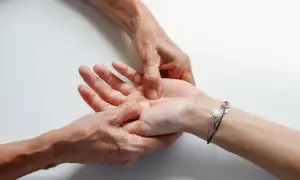Maintaining Professional Boundaries: Addressing Concerns of Massage Creep in the Health Industry

- The Importance of Professionalism in the Massage Industry
- Recognizing the Signs of Massage Creep
- The Impact of Massage Creep on Mental and Physical Health
- The Role of Consent in Massage Therapy
- Steps to Ensure a Safe and Comfortable Massage Experience
- Seeking Help and Reporting Instances of Massage Creep
Massage Creep refers to the inappropriate behavior exhibited by some massage therapists towards their clients. It involves crossing professional boundaries and engaging in actions that are uncomfortable, invasive, or even sexual in nature. This issue has gained attention in recent years as more individuals come forward with their experiences of misconduct in the massage industry. It is crucial to understand the gravity of this problem and take steps to address it effectively.
The Importance of Professionalism in the Massage Industry
Professionalism plays a crucial role in the massage industry. It ensures that clients receive safe and effective treatments while maintaining their dignity and privacy. Professional boundaries are essential to establish trust between the therapist and client. By adhering to ethical standards, massage therapists demonstrate respect for their clients' well-being and create a comfortable environment for healing. Upholding professionalism not only enhances the reputation of the massage industry but also safeguards the physical and emotional health of both clients and practitioners.
Recognizing the Signs of Massage Creep
Recognizing the signs of massage creep is crucial in maintaining a safe and respectful massage environment. Some common signs include inappropriate comments or jokes, excessive touching in sensitive areas, lingering or unnecessary contact, and disregarding boundaries set by the client. It's important to trust your instincts and pay attention to any feelings of discomfort or unease during a massage session. If something feels off or inappropriate, it's essential to address it promptly to ensure your safety and well-being.
The Impact of Massage Creep on Mental and Physical Health
Massage creep can have a significant impact on both mental and physical health. When boundaries are crossed, clients may experience feelings of discomfort, anxiety, and violation. This can lead to emotional distress, affecting their overall well-being. Physically, inappropriate touch or pressure can cause pain, injury, and even trauma. It is crucial to address massage creep to ensure the safety and well-being of clients in the massage industry.
The Role of Consent in Massage Therapy
Consent is a fundamental aspect of any massage therapy session. It is the responsibility of the massage therapist to ensure that the client feels comfortable and safe throughout the entire experience. Without proper consent, a massage can quickly become invasive and even traumatic.
Obtaining consent means more than just asking for permission to touch the client's body. It involves clear communication about the purpose of each technique, explaining any potential discomfort or sensations that may arise, and allowing the client to give ongoing feedback.
Consent should be given freely, without any form of coercion or pressure. It should also be informed, meaning that the client understands what will happen during the session and has been provided with all necessary information to make an educated decision.
Respecting boundaries and honoring personal space is crucial in maintaining a professional relationship between the therapist and client. If at any point during the session, the client expresses discomfort or withdraws consent, it must be immediately acknowledged and respected.
By prioritizing consent in massage therapy, therapists create a safe environment where clients feel empowered and in control of their own bodies. This not only enhances trust but also promotes overall well-being and relaxation during the session.
Steps to Ensure a Safe and Comfortable Massage Experience
1. Research and choose a licensed and reputable massage therapist or spa.
2. Communicate your boundaries and preferences before the session begins.
3. Request a private and secure treatment room for your massage.
4. Undress only to your comfort level, ensuring that you are covered with a sheet or towel during the session.
5. Speak up if you feel uncomfortable at any point during the massage.
6. Trust your instincts - if something feels off, end the session immediately.
7. Remember that you have the right to refuse any requests that make you uncomfortable.
8. Report any instances of inappropriate behavior to the establishment or relevant authorities for further action.
Seeking Help and Reporting Instances of Massage Creep
If you ever find yourself in a situation where you feel uncomfortable or violated during a massage, it is crucial to seek help and report the instance of massage creep. Your safety and well-being should always be a priority. Start by talking to a trusted friend or family member about what happened. They can provide support and guidance on how to proceed. Additionally, consider reaching out to professional organizations or regulatory bodies in the massage industry. They can offer resources and assistance in dealing with the situation. Remember, reporting instances of massage creep not only helps protect yourself but also ensures that other individuals are not subjected to similar experiences.
In conclusion, it is crucial to promote a safe and respectful massage environment in order to address concerns of massage creep in the health industry. By maintaining professional boundaries and upholding high standards of professionalism, massage therapists can ensure that clients feel comfortable and secure during their sessions. Clear communication, obtaining informed consent, and respecting personal boundaries are key aspects of creating a safe space for clients. It is also important for individuals to speak up and report instances of massage creep to protect themselves and others. By working together, we can create an environment where everyone feels respected and valued in their pursuit of wellness through massage therapy.
Published: 16. 01. 2024
Category: Health



